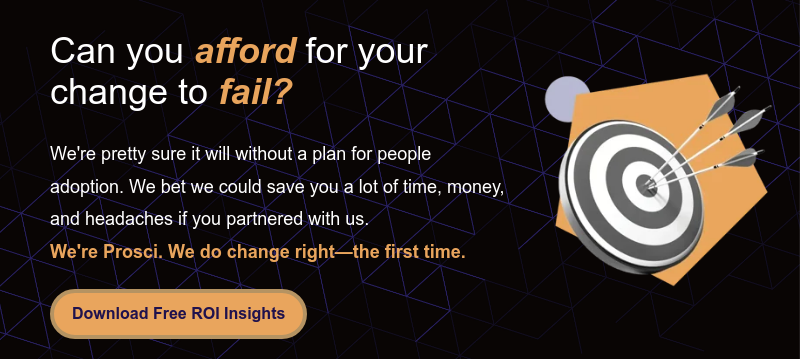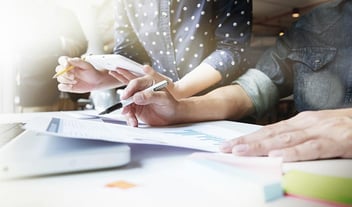Reinforcement and Sustaining Change Management

2 Mins
Updated: July 16, 2025
Published: August 23, 2018

Reinforcement is critical to the success of all initiatives because people have a natural tendency to revert back to what they know and are comfortable with.
Yet, because reinforcement steps come later in the change process, they are often neglected. We asked research participants the following questions to understand if reinforcement is getting the attention that it deserves, who is responsible for it, and what methods change management practitioners are using to sustain change:
- Did you develop plans for reinforcement and sustainment activities?
- What reinforcement tactics were used?
- Did you allocate resources for reinforcement activities?
- How do you deal with the issue of reinforcing and sustaining change when it occurs after the project closes?
- Who was responsible for making sure reinforcement and sustainment activities were carried out?
- How did you use performance appraisals and measures to encourage adoption?
Here is what we found:
Planning for
Reinforcement and Sustainment Activities
Participants in our Best Practices in Change Management research were asked if reinforcement and sustainment activities were planned for as part of their projects. Sixty-one percent of participants planned for these activities.
Planned For Reinforcement and Sustainment Activities

Those who planned for reinforcement and sustainment reported greater success rates on their projects. The figure below shows that 81% of participants who planned for reinforcement or sustainment activities met or exceeded project objectives, compared to only 15% of participants that did not plan for reinforcement.
Impact of Planning For Reinforcement on Project Success

Resourcing for
Reinforcement and Sustainment Activities
Participants were also asked if project resources were allocated to the reinforcement and sustainment activities. Only 44% reported that resources were allocated to this effort.
Allocated Resources To Reinforcement and Sustainment Activities

Participants who allocated resources to reinforcement and sustainment activities reported greater success rates on their projects. The figure below shows that 67% of participants who allocated resources to reinforcement and sustainment activities met or exceeded project objectives, compared to 55% of those who did not allocate resources to reinforcement.
Impact of Allocating Resources For Reinforcement And Sustainment On Meeting Objectives

Roles in
Reinforcement and Sustainment
Participants identified who was responsible for the reinforcement and sustainment activities on their change initiative. Half of participants said it was the leader or manager of the given impacted group, while 38% reported that the change management resource or team was responsible for this effort. (Participants were able to select multiple roles, resulting in a total of more than 100%.)
Role Responsible For Reinforcement And Sustainment

From a change management perspective, reinforcement can be difficult because once a change is finished, we often move on to the next change. It takes concerted effort and time to make sure a change "sticks," and given the scarce resources and change saturation that many organizations face, reinforcement efforts often fall short. We see this scenario playing out in the data. While a significant number of organizations (81%) are planning for reinforcement and sustainment activities, far fewer (55%) are dedicating resources to the effort. The data speaks for itself: organizations that plan and resource for reinforcement are more likely to meet or exceed project objectives than organizations that neglect this critical step in the change process.



